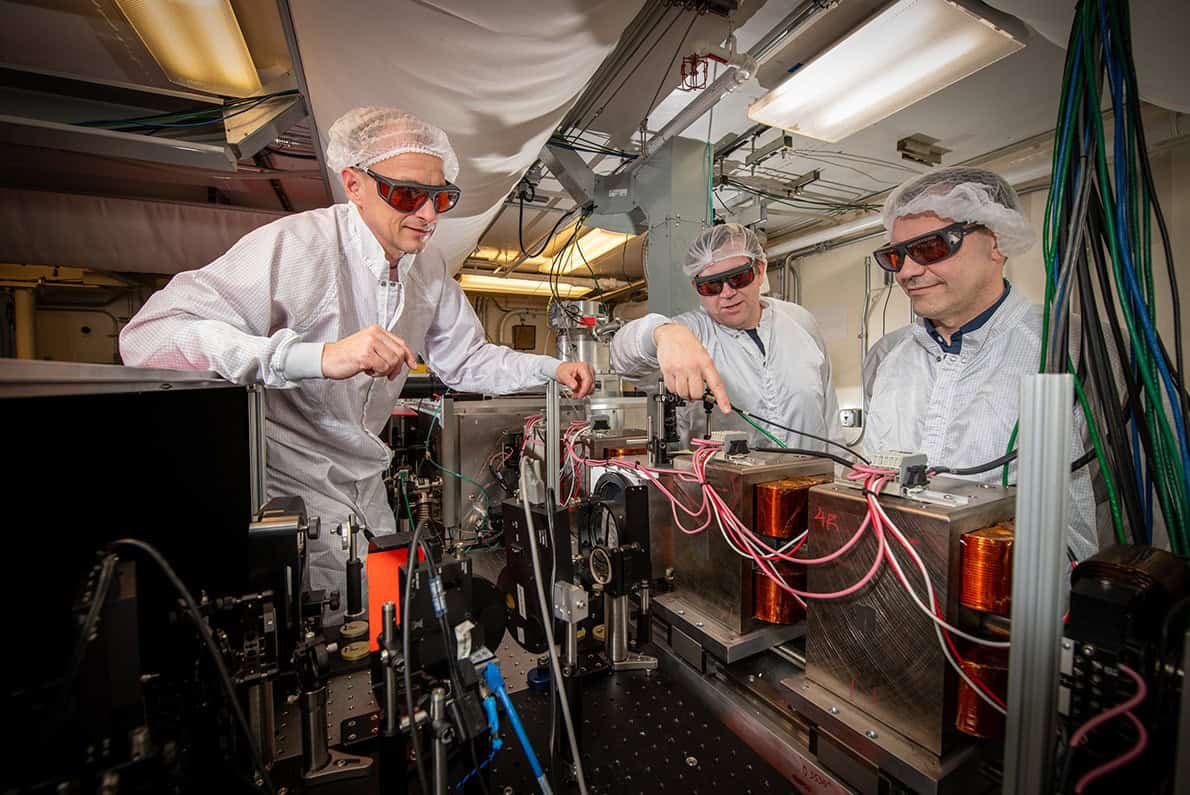Science
New Laser-Plasma Accelerator Set to Transform X-Ray Generation

A new free-electron laser (FEL) driven by a plasma-based electron accelerator has been introduced, marking a significant advancement in the field of X-ray technology. Led by Sam Barber at Lawrence Berkeley National Laboratory, this innovative device aims to provide compact and cost-effective solutions for generating intense, ultra-short X-ray laser pulses. The project involved collaboration with researchers from the University of California Berkeley, University of Hamburg, and Tau Systems.
FELs produce X-rays through a rapid acceleration process of electron pulses, facilitated by a series of magnets known as an undulator. The resulting X-rays, emitted at a narrow wavelength, exhibit laser-like coherence, making them particularly valuable for various scientific applications. An important advantage of FELs is their tunability; researchers can adjust the wavelength of the emitted X-rays simply by changing the energy of the electron pulses.
Conventional FELs, while effective, require expensive and extensive setups, often relying on kilometer-scale electron accelerators that incur significant costs for construction and maintenance. To address this issue, scientists have turned to laser-plasma accelerators (LPAs), which can accelerate electron pulses to high energies over distances as short as a few centimeters.
Overcoming Challenges in LPA Utilization
Despite their potential, LPAs have been challenging to integrate into FEL systems due to issues such as parameter jitter and a larger energy spread in the electron beam compared to traditional accelerators. Barber noted the ongoing global research efforts to enhance LPA performance, stating, “Sustained research continues to drive improvements in all aspects of LPA performance.”
Recently, a team at the Chinese Academy of Sciences achieved a noteworthy milestone by using an LPA to produce FEL pulses with a wavelength of 27 nm, approaching the X-ray regime, although only around 10% of the attempts were successful.
Building on these advancements, Barber’s team has made several enhancements to their FEL setup to improve compatibility with LPAs. “We have taken great pains to ensure a very stable laser with several active feedback systems,” he explained. Their strategy involved starting with longer wavelengths for optimization before scaling the system down to shorter wavelengths.
With their refinements, the researchers amplified the FEL output by a factor of 1000, achieving this in over 90% of their tests. While the experiment operated at around 420 nm—considered less exciting scientifically—the team plans to upgrade the system for sub-100 nm wavelengths, which hold greater relevance for scientific applications.
Future Aspirations and Technological Advancements
The researchers remain optimistic about reaching further breakthroughs that could enhance the feasibility of LPA-driven FEL experiments. A crucial target is achieving the “saturation level” at X-ray wavelengths, beyond which FEL amplification becomes significantly limited. “Another really crucial component is developing laser technology to scale the current laser systems to much higher repetition rates,” Barber added. Currently, typical lasers used for LPAs operate at around 10 Hz, but to compete with existing light sources, this rate must increase dramatically to the megahertz range.
The implications of this research could be transformative for the field of X-ray generation, making these technologies more accessible and affordable for a broader range of scientific applications. The findings are detailed in the journal Physical Review Letters. As advancements continue, the potential for compact, efficient X-ray sources promises to open new frontiers in various scientific disciplines.
-

 World3 days ago
World3 days agoCoronation Street’s Shocking Murder Twist Reveals Family Secrets
-

 Entertainment4 months ago
Entertainment4 months agoKate Garraway Sells £2 Million Home Amid Financial Struggles
-

 Entertainment3 months ago
Entertainment3 months agoAnn Ming Reflects on ITV’s ‘I Fought the Law’ Drama
-

 Health3 months ago
Health3 months agoKatie Price Faces New Health Concerns After Cancer Symptoms Resurface
-

 Entertainment3 weeks ago
Entertainment3 weeks agoCoronation Street Fans React as Todd Faces Heartbreaking Choice
-

 World4 weeks ago
World4 weeks agoBailey Announces Heartbreaking Split from Rebecca After Reunion
-

 Entertainment6 days ago
Entertainment6 days agoTwo Stars Evicted from I’m A Celebrity Just Days Before Finale
-

 World6 days ago
World6 days agoKevin Sinfield Exceeds Fundraising Goal Ahead of Final Marathons
-

 Entertainment3 months ago
Entertainment3 months agoCoronation Street’s Carl Webster Faces Trouble with New Affairs
-

 Entertainment3 months ago
Entertainment3 months agoWhere is Tinder Swindler Simon Leviev? Latest Updates Revealed
-

 Entertainment4 months ago
Entertainment4 months agoMarkiplier Addresses AI Controversy During Livestream Response
-

 Science2 months ago
Science2 months agoBrian Cox Addresses Claims of Alien Probe in 3I/ATLAS Discovery



















